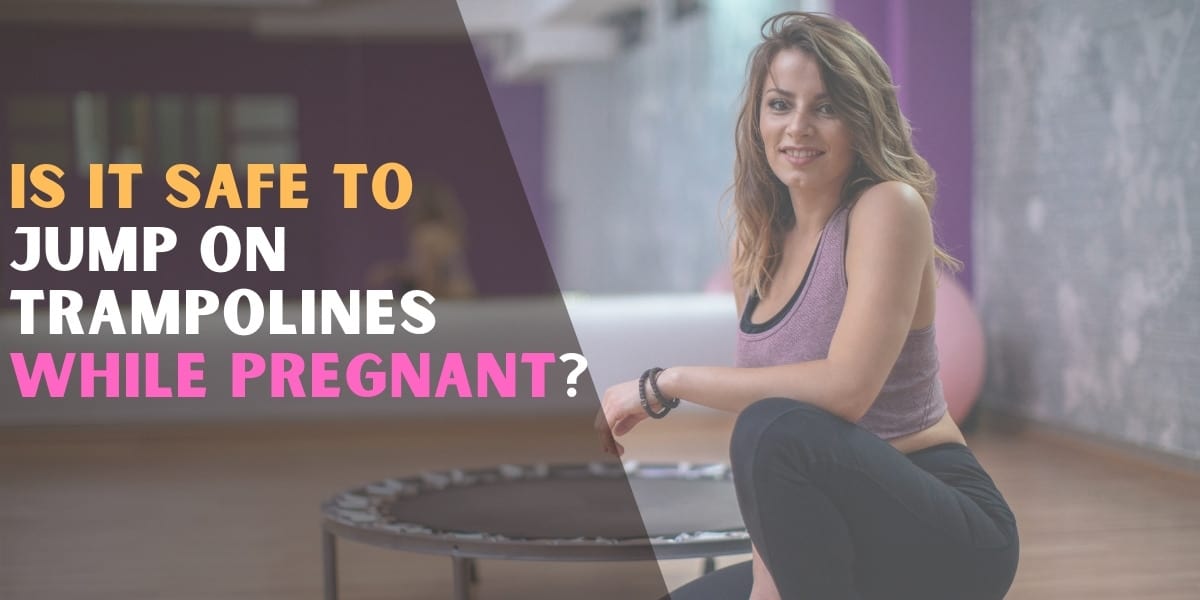Can Pregnant Women Jump on Trampolines?
Jumping and bouncing on a trampoline can be a fun and enjoyable activity for everyone, from kids to adults. For kids, trampolining can help be helpful for improving balance, coordination, and muscle strength. But proper safety guidelines, such as a safety net or padding around the trampoline, should be followed. Even adults are advised to warm up and stretch properly before starting any trampoline workout. But what about pregnant women- Can they jump on trampolines?
The thing is, pregnant women need to be aware of the risks associated with this form of activity, such as the potential for falls, sprains, and strains. Hence, you need to keep in mind a few things if you feel tempted to jump on a trampoline while expecting a baby.
Is it safe to jump on trampolines when pregnant?
Trampolining is one of the activities pregnant women are told to avoid during any stage of pregnancy. This is because the high-impact nature of trampolining poses risks to pregnant women and developing babies.
First, the hormonal changes in pregnancy make the joints more relaxed and less stable, which may worsen due to the stress on the joints caused by the impact and the force of jumping on the trampoline.
Apart from that, the risk of falling or being thrown from the pad can be dangerous for both the mother and baby. Moreover, trampolining in an outdoor environment or a park may also not be safe for pregnant women as it can be crowded, and there is a risk of falling or getting hit by other jumpers.
Furthermore, trampolining during pregnancy can also lead to other risks, such as preterm labor, placental abruption, and low birth weight. It is important to note that trampolining is not recommended during any stage of pregnancy. Hence pregnant women are advised to consult a healthcare provider to find safe alternatives.
Safe activities for staying active during pregnancy
There are many safe exercises that pregnant women can do to stay active and healthy throughout pregnancy. These include:
- Walking: This is an excellent form of low-impact exercise for pregnant women to improve cardiovascular health and increase blood circulation. Unlike trampolining, it puts minimal stress on your joints and muscles.
- Swimming: According to the American College of Obstetricians and Gynecologists, swimming is a safe, fantastic way to stay active during pregnancy. Also, swimming is a low-impact activity that provides a full-body workout without straining the joints.
- Yoga: Safe and effective for reducing stress and anxiety, yoga can also help to improve flexibility, balance, and strength during pregnancy.
- Stationary cycling: American College of Obstetricians and Gynecologists claims stationary cycling is yet another safe, low-impact activity that can help improve cardiovascular health and increase the leg strength of expecting moms.
- Prenatal fitness classes: Many gyms and community centers offer prenatal fitness classes specifically designed for pregnant women. These classes can provide a safe and supportive environment for women to stay active during pregnancy.
Before starting any exercise regimen during pregnancy, you should listen to your body and consult your healthcare provider for personalized advice and guidance.
Final Thoughts
Your and your baby’s health depends on you and the decisions you make while pregnant. If you do decide to use an indoor trampoline, it is important to follow a few safety guidelines listed below:
- Consult with your doctor before using a trampoline. They may be the right individual to advise you on the safety of trampolining and other activities based on your health condition and pregnancy stage.
- If your doctor gives a green signal, use a trampoline with a handle or a safety enclosure. These features are helpful for preventing falls and injuries. Also, make sure that the springs are properly secured, and the mat is in good condition.
- Try not to overdo anything. It’s best to avoid doing any high-impact or risky moves that could cause falls or injuries.
- Additionally, it is important to stay hydrated and wear comfortable clothing and shoes with good traction. Avoid wearing loose clothing that could get caught on the trampoline.
Finally, trampolining can be physically demanding, so take regular breaks to re-energize. If you feel uncomfortable or experience any pain while using the trampoline, stop immediately and seek medical attention if necessary.







